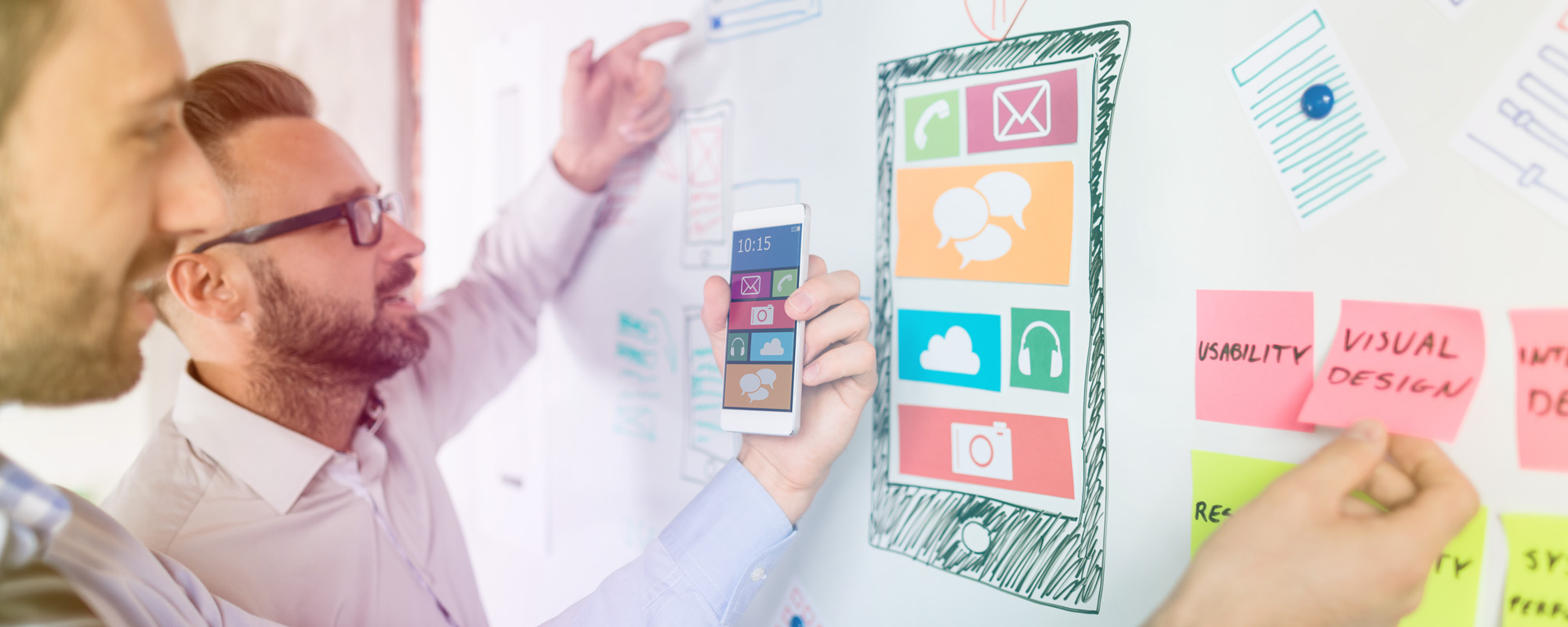Overview of Approach to Developing the Design Descriptors
Affordance theory defines a technology in terms of the uses, interactions and possibilities that the technology affords to its users; and affordances can be categorised – according to their potential for achieving outcomes – as Functional, Perceptual, Maintenance and Contextual (Best 2009; Evans et al. 2017). These categories of affordance have been adapted in this project and re-named as Functional, Perceptual and Adaptive, to reflect the fact that contextual application does not constitute a separate affordance and to differentiate known and unknown contexts. For the purposes of this project, affordances are categorised and defined as follows:
Functional affordances relate to the operation of technology; this includes naming, knowing and operating the features of a technology/technologies to perform tasks.
Perceptual affordances relate to interpretation and being discerning about technology tools and practices for their suitability and in-context operation in known contexts.
Adaptive affordances relate to imagining, adapting and extending technology use in previously unexplored and emerging contexts; this requires functional knowledge/skills and perceptual experience.
(Source: adapted from Best 2009; Evans et al. 2017; Fray et al. 2017)
We divide the digital capabilities into four families that emerged from discussion of our current interdisciplinary curriculum at the School of Design, University of Technology Sydney: Persuasion; Collaboration; Complexity & Systems; Tools & Making. These are explained below, with Functional, Perceptual and Adaptive examples within each domain.
We used these families in the analysis of three data sets: an industry round table; an educators survey; learning and teaching intervention in a Master of Design subject (the Interaction and Service Design Studio). The Design Descriptor has been refined iteratively.
From discussion with the subject coordinator collaboration was the best capability family to focus on in this study. We will also use these digital capability descriptors in the renewal of the interdisciplinary curriculum over 2018-2019.
The Functional, Perceptual and Adaptive capabilities are hierarchical but integrated. Adaptive capabilities are underpinned by some Functional knowledge/skills and Perceptual experience.
DIGITAL CAPABILITIES DESCRIPTOR FOR DESIGN
1. persuasion
Persuasion relates to recognising the inherent rhetorical value embedded in a design and communicating its story to a variety of audiences through a variety of techniques. Designers need to choose and use appropriate media, technology and tone to persuade effectively.

Functional affordance/capabilities
Storytelling:
Name and define narrative approaches; visualisation, interface design, using software to illustrate/present/argue.
Presentation:
Present individually and as a team; present online and in person; use sound, light, images and demonstrations to present online; record and archive live presentations; notetaking, sharing; copywriting skills.
Perceptual affordance/capabilities
Storytelling:
Develop content using techniques appropriate to a range of media; analyse data to tell stories; critically evaluate stories.
Presentation:
Interpret the power of visual, audio, text and atmospheric dimensions from an audience perspective; present the same ideas in different ways and multiple locations to suit the audience, context and purpose.
Adaptive affordance/capabilities
Storytelling:
Tell the right stories to the right audiences; bring future histories and futures into stories about the present; use complex visual language to tell stories in multisensory ways; translate and adapt transmedia storytelling; make worlds and ecologies of stories; shape futures using stories of future scenarios; work with generative systems, AI and machine learning to tell stories, developing new tools and platforms (or new uses) to tell and disseminate stories.
Presentation:
Synthesise the tonal needs of different contexts and show how different exchanges matter in the context of a bigger picture (eg. pitching a part of a bigger project); present experience to audiences, and explore multiple potential outcomes (using clickable prototypes or virtual reality).
2. collaboration
Designers need to be able to work effectively in teams with diverse skill sets, learning needs and communication styles. Effective collaboration involves being aware of this diversity and knowing how to best operate within a team, both in terms of personal involvement and how others are working. Contingencies to do with time constraints and work life balance also ought to be factored in.

Functional affordance/capabilities
Project management:
Gantt charts, spreadsheets, calendars; schedule meetings and projects; organise files using agreed naming conventions; implement version control systems; archive conversations.
Working with different specialists:
Discuss disciplinary knowhow with various strata of tech and business, engineering, science etc.; name and define different roles in production processes; use communication etiquette.
Perceptual affordance/capabilities
Project Management:
Make decisions collaboratively; manage workflow (including production); use a variety of tools (sometimes simultaneously); use differing levels of file security; write and edit collaboratively; theme conversation streams and pick them up at different project stages.
Working with different specialists:
Negotiate; determine where design fits in production processes; record key details of specialists (name, company, specialities).
Adaptive affordance/capabilities
Project Management:
Define and develop relationships, taking account of cross-cultural dynamics, professional and disciplinary differences, socio/economic and political context of project; combine different tools in response to the collaboration; determine when text or audio visual communication is appropriate and productive (telepresence); create new types of projects and new types of project management (try projects in different contexts with different combinations of people); assemble project fragments and iterations; self-initiate projects; work out new forms of design collaboration rather than follow a set methodology; acknowledge the impact of design work (accountability).
Working with different specialists:
Advocate for design within productions; communicate the big picture; integrate different disciplinary knowledge and learning and communications styles for better outcomes; connect your team to relevant expert knowledge in response to design iterations ( e.g. using online platforms); create cohesion from diversity; expand the scope of design collaborations (e.g. researching Indigenous designers in Australia); learn to collaborate with machines and data (machine learning, artificial intelligence).
3. complexity & systems
Designers ought to be able to understand the implications of their work in a broader social, environmental, political and economic context. This involves an appreciation for the amount, range and relationality of variables that are relevant to a design brief and the opportunities and limitations of design with regard to systematic and enduring changes in this context.

Functional affordance/capabilities
Making sense:
Visualise (graphs, diagrams, pictures, soundscapes); describe how data is generated and by whom.
Rich pictures:
Describe a rich picture including its elements.
Business empathy (digital context):
Identify aspects to be considered in design such as accounting, business planning, data analytics, marketing, sales, branding.
B
Perceptual affordance/capabilities
Making sense:
Use data/visualisation to tell stories to communicate; scrape data from various sources.
Rich pictures:
Make a rich picture; explain when making a rich picture is appropriate and who to consult.
Business empathy (digital context):
Reflect on how design work sits in the context of different kinds of business and relates to commercial imperatives more broadly.
Adaptive affordance/capabilities
Making sense:
Generate new insights; link user interfaces with data; bring unconventional data sets into contact; facilitate interaction within the system; use predictive analytics; translate quantitative data to stories in new ways.
Rich pictures:
Make a rich picture that has impact; articulate impact in diverse ways and new contexts.
Business empathy (digital context):
Advocate for design led business strategy; see and pursue possibilities; adapt design for business imperatives in relation to broader social, political and cultural imperatives.
4. tools & making
Making is core to a designer’s work. Changes in technology have increased the diversity of tools available and designers need to be able to adapt their skills and knowledge of making in this always changing context. This will involve knowing what new tools they will be best advantaged in being able to use, the levels of proficiency required, and how to successfully map enduring design capabilities onto this new context.

Functional affordance/capabilities
Using software:
Demonstrate technical capability in various types of industry relevant software.
Perceptual affordance/capabilities
Using software:
Explain who decides what software to use and why; interpret limitations of tools; match tools to project priorities and resources.
Adaptive affordance/capabilities
Using software:
Respond to life spans of digital files/tools; anticipate future tools; hack; adapt software to alternative uses; open closed files, tools and systems; scrape data; repair tools and files.
Focused EXAMPLE for DESIGN
DESIGN: Collaboration Domain, Project Management Focus (using SLACK as a case study).
The table below presents a detailed interpretation of design collaboration domain, project management focus.
Functional
Set up, use and maintain systems for sharing documents; set up meetings online; archive conversations, use naming conventions.
Demonstrate technical capability in various types of industry relevant software.
Perceptual
Manage project workflow (including production), make decisions in online platforms, manage version control using naming conventions; define roles and relationships with a team, knowing when text or audio visual communication is appropriate and productive (understanding telepresence);
SLACK: combine with other tools, theme conversation streams, make decisions as a group; know when to add people and when not to add people.
Adaptive
- Manage cross-cultural dynamics including multi-lingual collaboration; identify and manage professional/disciplinary differences to extend project outcomes.
- Apply and adapt systems thinking to develop naming conventions appropriate to the project.
- Adapt to and manage the socio/economic/political context of project; combine different tools in response to the collaboration.
- Self-initiate projects; manage elements of projects that are off-shoots, extensions, fragments or iterations.
- Propose and work out new forms of design collaboration rather than following a set methodology; recommend security measures.
- Create new types of projects and new types of project management (trying projects and tools in different environments, contexts, configurations).
- Generate data insights and critically reflect on them to demonstrate the impact of design work (accountability).
SLACK: connect multiple projects over time; customise tool for group’s purposes; use multiple languages; use data generated within SLACK in creative ways (e.g. to demonstrate a group’s decision making, make an argument, pitch an idea – text-based conversations could be visualised).
References
Best, K. (2009). Invalid command: Affordances, ICTs and user control. Information, Communication & Society, 12(7), 1015-1040.
Evans, S. K., Pearce, K. E., Vitak, J., & Treem, J. W. (2017). Explicating affordances: A conceptual framework for understanding affordances in communication research. Journal of Computer-Mediated Communication, 22, 35–52.
Fray, P., Pond, P., & Peterson, J. F. (2017). Digital work practices: Matching learning strategies to future employment. In Proceedings Australian & New Zealand Communication Association (ANZCA) Conference, University of Sydney, Australia, 4-7 July.